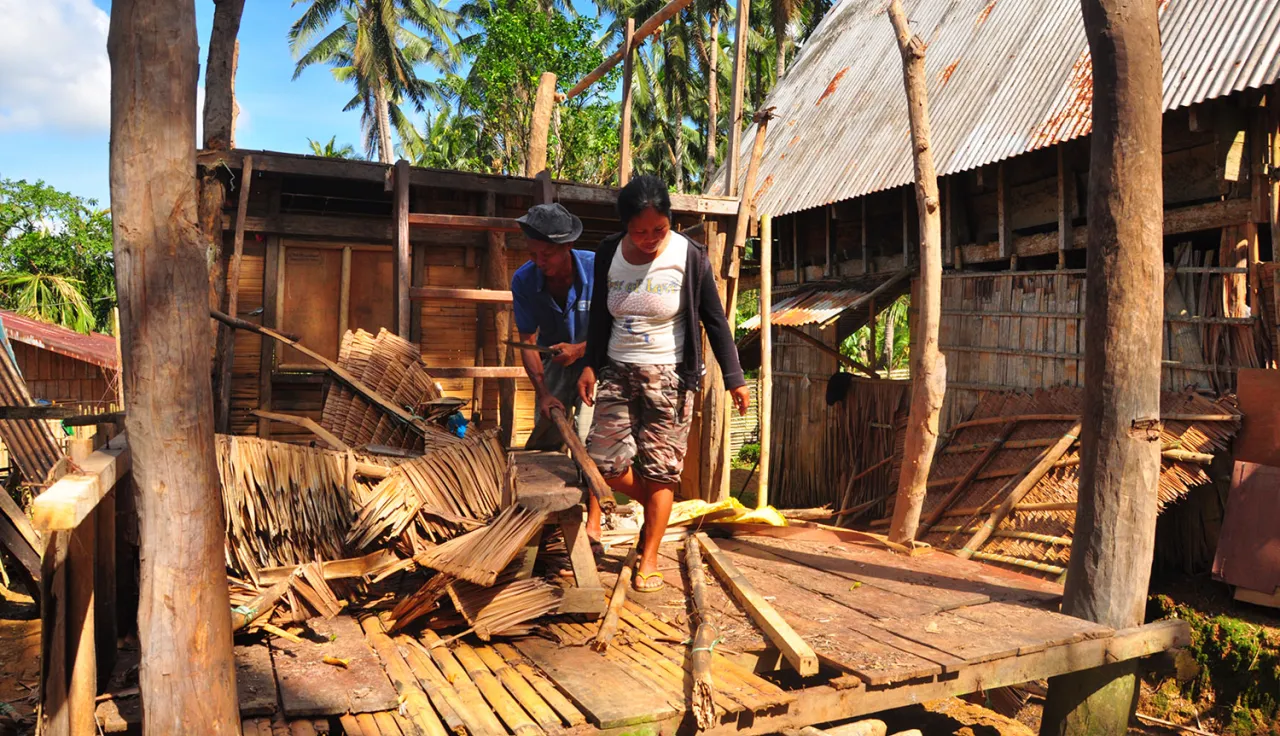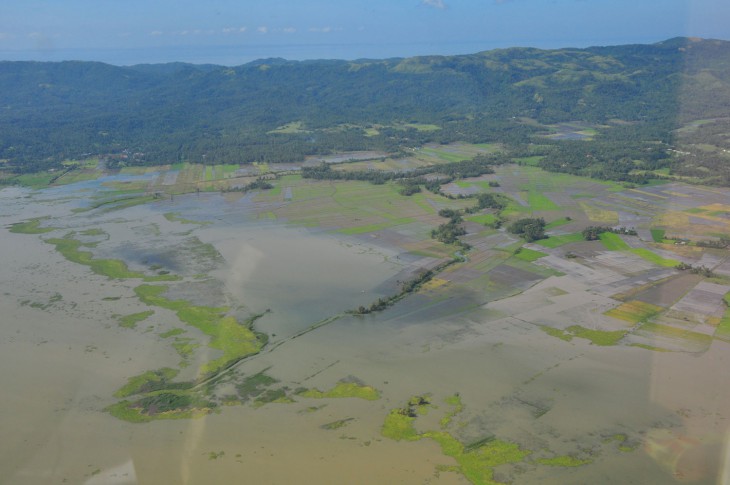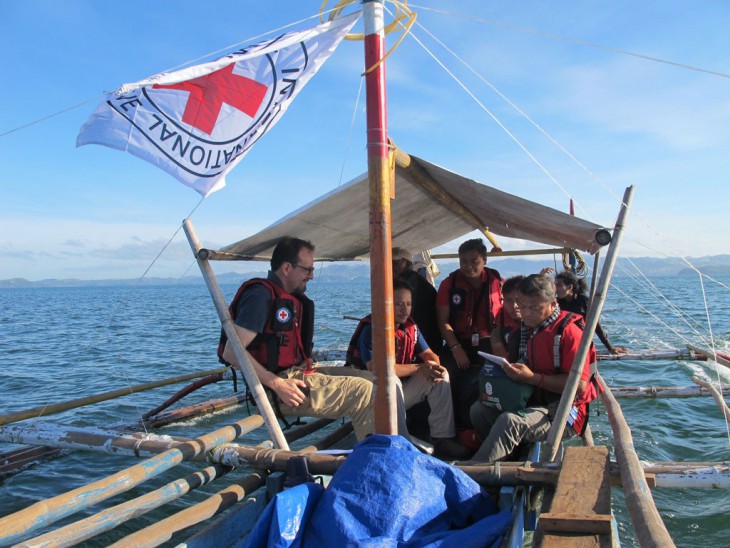Typhoon Hagupit deals double blow to communities struggling to recover from Haiyan

Since Typhoon Hagupit struck the Philippines just over a week ago, the Philippine Red Cross has had three rapid response teams on the ground to assess the impact on the worst affected areas, including the easternmost island group of Samar where the typhoon first made landfall.
Initial reports indicate that overall damage from Typhoon Hagupit was not as bad as first feared, but in parts of Samar – still bearing the scars of Typhoon Haiyan – the picture is very different. Families grappling with high poverty rates are struggling to recover, especially in communities along the coast and in isolated mountain pockets. The effects of a protracted armed conflict in some parts of Samar exacerbate their plight.

A joint ICRC-PRC team conducted an aerial survey in remote areas of Northern and Eastern Samar. CC BY-NC-ND / ICRC / Arwin Fabelico
Based on government figures, nearly one-third of the 3.85 million population affected by Hagupit live in Samar.
The Philippine Red Cross has so far provided more than 44,000 hot meals, 7,900 food packs and more than 51,000 litres of drinking water, as well as blankets, mats and other non-food items.
Last week, it dispatched a convoy loaded with food and basic items as well as ambulances, water tankers and fuel trucks to the Bicol and Samar regions. Last week Richard Gordon and Gwendolyn Pang, the chairman and secretary-general of the Philippine Red Cross, and Kari Isomaa, the IFRC's Head of Delegation in the Philippines, were taken to see conditions on the ground and hear first-hand reports from staff and volunteers in Catarman, provincial capital of Northern Samar, followed by visits to Dolores and Borongan in Eastern Samar. A day earlier, a joint team from the International Committee of the Red Cross (ICRC) and the Philippine Red Cross also conducted an aerial assessment of remote areas in Northern Samar; two other ICRC teams covered Eastern and Samar province by land.
Food crops have been badly affected. Rice fields where new seedlings had been planted weeks before were washed away and banana trees flattened. Locals have erected signs saying 'Help us' along the side of the road and many people are making do with what little they have left in the way of food and shelter.

Joint ICRC-PRC assessment team in Silvino Lobos municipality, Northern Samar. CC BY-NC-ND / ICRC / Arwin Fabelico
Shelter and food needs also remain in many mountainous areas that experienced flash flooding from heavy rain. The rain turned into rivers of mud as it coursed down the mountainside, affecting many communities in its path. Mr Gordon warned that some of these areas will take time to be fully assessed, either because a bridge has been destroyed or because they are in remote valleys that can take days to reach by foot.
According to the Government there are still about 172,000 people receiving some kind of help either inside or outside an evacuation centre. Most of them are in Samar.
In Dolores, Gordon and Pang stopped to talk to representatives of families who were pre-emptively evacuated to the local elementary school. Concerned parents told the Philippine Red Cross leaders they had been told to leave so classes could resume but they had no choice but to remain in the overcrowded school as Hagupit had destroyed their homes.
For Samar, tents and shelter repair items from Philippine Red Cross stock are being dispatched with other emergency supplies including sleeping kits, tarpaulins, hygiene kits and jerry cans.

Joint ICRC-PRC assessment team en route to Daram and Zumarruga islands in Western Samar. CC BY-NC-ND / ICRC
The ICRC is providing 150 tonnes of rice and sardines, as well as water-treatment equipment to the Philippine Red Cross for distribution to affected families in the coastal areas of Northern and Eastern Samar
A health delegate from the Canadian Red Cross on the same trip helped set up in Dolores a Basic Health Care Centre– a set of field units that can be used as an emergency hospital to take pressure off the local health services until the situation returns to normal. The ICRC also supported the BHCU with medicines and medical supplies. Around 200 people have so far benefited from its primary health care services.
The ICRC also supported the PRC in its efforts to restore contacts between relatives in the aftermath of Hagupit.
Article written by Kate Marshall, International Federation of Red Cross and Red Crescent Societies
